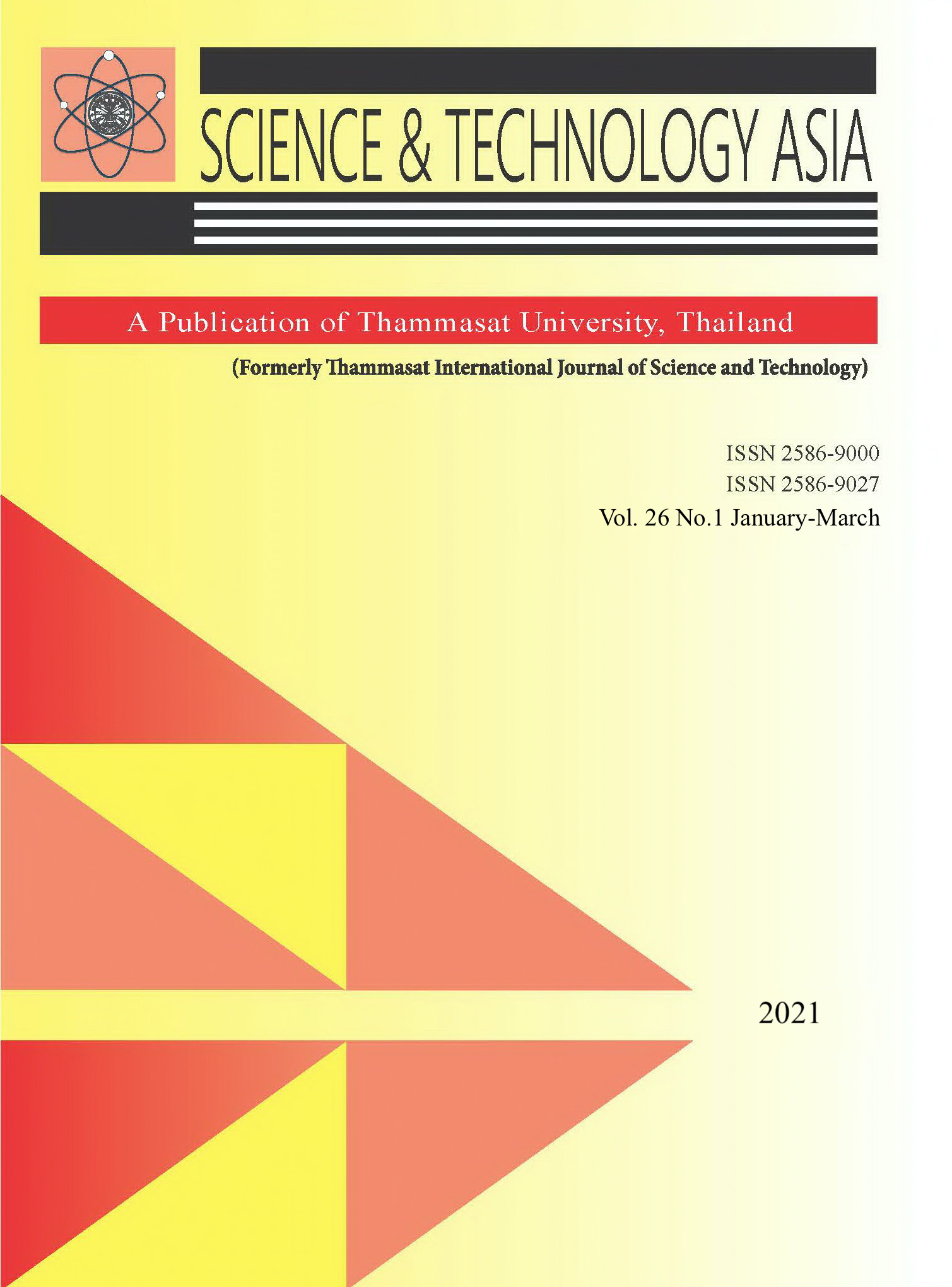Total Phenolic, Total Flavonoid, Total Condensed Tannin Contents and Antimicrobial Activity Against Diarrheal Bacteria of the Bark and Fruit of Terminalia nigrovenulosa Pierre ex Laness
Main Article Content
Abstract
The bark and fruit of the Thai astringent herb, Terminalia nigrovenulosa are some of the most frequently used herbal products for treating diarrhea and dysentery. Unlike other astringent herbs, this plant has never been screened for antimicrobial activity against diarrheal bacteria before. The bark and fruit of this plant were prepared via water extract and ethanol extract to investigate the presence of any antimicrobial activity against various strains of bacterial; this was done by disc diffusion method and broth dilution method. Additionally, total phenolic content, total flavonoid content, and total tannin content was measured. Water and ethanol extracts of the fruit had a total phenolic content of 157.70±2.83 and 371.97±6.13 mg gallic acid equivalence /g extract. Total flavonoid content of the fruit was found to be 332.24±4.59 μg quercetin equivalence/g extract and 268.90±1.09 μg quercetin equivalence/g extract for the water and ethanol extracts, respectively. Whereas the total condensed tannin from the bark was 0.89±0.02 μg catechin equivalence/g extract and 0.85±0.03 μg catechin equivalence/g extract for the water and ethanol extracts, respectively. Regarding antimicrobial action against diarrheal bacterial, the ethanol extract of the fruit showed activity against Shigella sonnei, Shigella flexneri, Shigella dysenteriae, Salmonella typhimurium, Escherichia coli, Bacillus subtillis, and Staphylococcus aureus with an inhibition diameter of 15, 7, 13, 10, 13, 15, and 15 mm, respectively, which was similar to ciprofloxacin. TheMIC of this plant’s fruit was 16.12 mg/ml compared to ciprofloxacin 0.01 mg/ ml. Overall, this study indicated that T. nigrovenulosa fruit has a tendency to inhibit the proliferation of dysentery bacterial and diarrheal bacterial; looking forward, it would be wise to develop further in vitro and in vivo models for future development.

